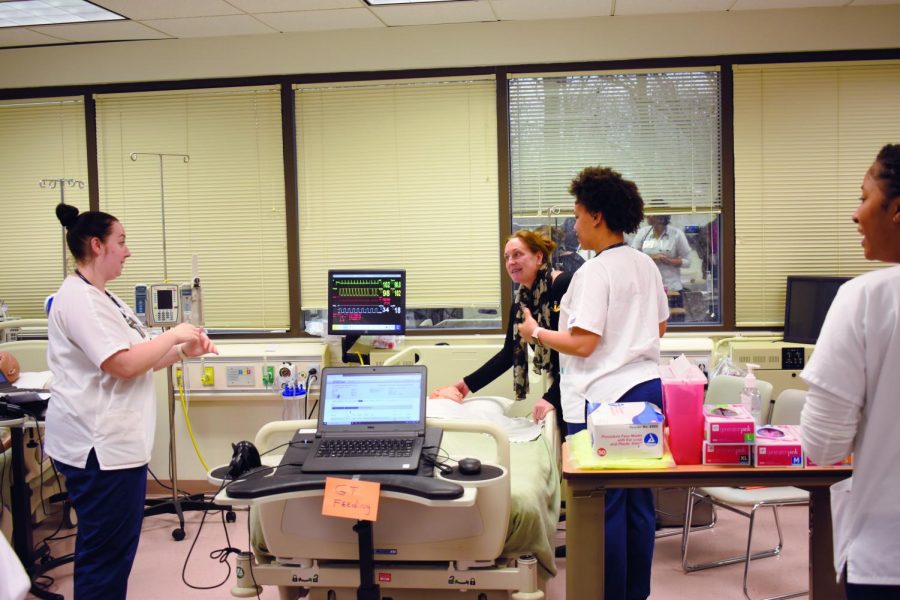Nursing program uses actors in lab simulations
In one of her performances as an actor in Nursing Department lab simulations, Cindy Huebler (back) pretends to be a mother worried about her child.
March 2, 2020
Cindy Huebler hurried into the hospital with complications related to her pregnancy. Nurses rushed her into the emergency room and tried to determine what was wrong.
They did their best to understand her problem, but Huebler and the baby died.
At least that’s how it seemed. In reality, Huebler was never in danger.
Huebler, a stay-at-home mother of three, is a paid actor in a Nursing Department program designed to give nursing students experience dealing with emergencies.
According to professor Myra Dennis, the Nursing Department simulation coordinator, the actors, known as “standardized patients,” perform as part of all six nursing courses at AACC to mimic real-life situations involving issues like dying or aggressive patients that students will face during their careers.
Dennis said one scenario has “a patient who is very depressed [and] has a history of cutting themselves, and we actually [put makeup on] the patient … so that they have a place where they can actually [pretend to] cut themselves and make it bleed.”
Dennis said in another situation nurses must help “the patient understand what hospice means [and] what end of life [care] is all about.”
Dennis said the program pays actors an hourly rate slightly higher than minimum wage.
Actors sign up online for hourly sessions during simulation labs, according to Dennis.
“They’re hired as a temporary employee of the college,” Dennis said. “Then, they go through some training that myself and some of the other faculty will do to prepare them.”
The actors receive a script featuring dialogue and information about the patients they will play.
“I enjoy it,” Huebler said. “I think they really benefit from … as close to a real-life situation as possible, and I try to make it as real as possible.”
Dennis said approximately eight actors have signed up to portray patients.
When the actors are unavailable, simulations use mannequins with professors talking through a speaker so students hear their voices through the mannequins.
Nursing professor Alice Stephens said the actors are more helpful than mannequins to students.
“It makes the simulation more real for them,” Stephens said. “So they have a real person that they can talk to as part of it, rather than just dealing with a plastic mannequin and a voice that’s coming through that mannequin.”
Tenth-year nursing student Vanessa Franck said the actors intimidate her sometimes, but they teach her more about nursing.
“It’s easy to get frazzled but it’s easier that we can react when she speaks rather than waiting a second to hear what they’re saying,” Franck said.
Fifth-year nursing student Essence Bennett said the actors “keep you on your toes [and help] with [our] communication skills.”
Students interested in becoming standardized patients can contact Dennis at mgdennis@aacc.edu.












